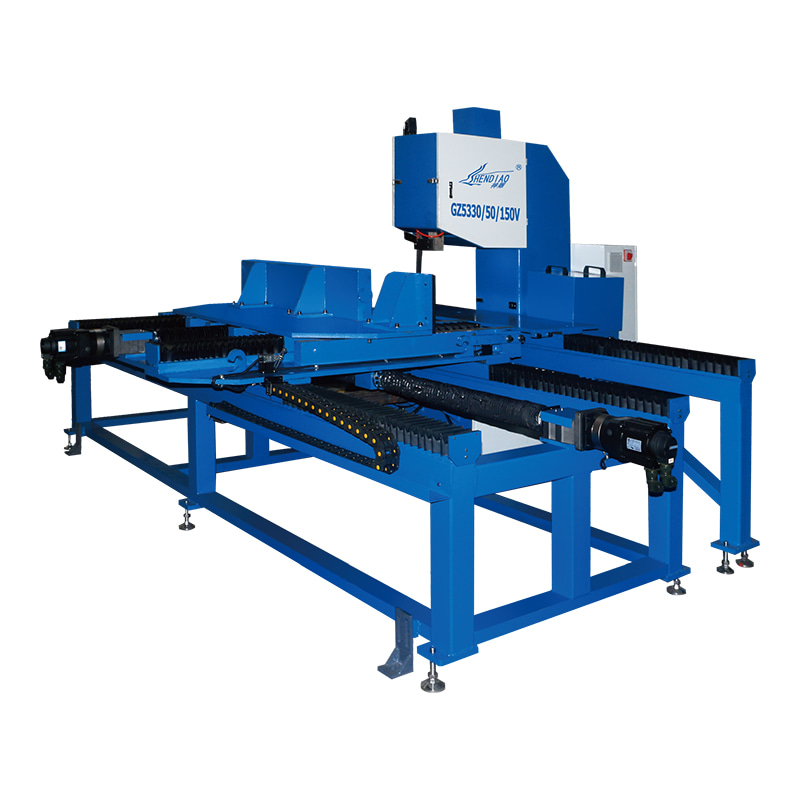Importance of Blade Wear Control
In graphite machining, maintaining precise and consistent cuts is critical for both product quality and operational efficiency. A graphite cutting band saw machine relies heavily on the condition of its blade, as wear can directly affect the flatness, smoothness, and dimensional accuracy of the cut. Continuous use, material abrasiveness, and friction generate gradual blade degradation, which, if unmanaged, can cause inconsistent cuts, edge chipping, or increased burr formation. Implementing strategies to reduce the impact of blade wear is essential for achieving reliable precision in industrial cutting applications.

Selecting the Appropriate Blade Material and Design
Blade selection plays a pivotal role in reducing wear and preserving cutting accuracy.
- Durable blade materials: Blades made from hardened steel or tungsten-carbide-coated alloys maintain sharpness and resist abrasion over prolonged use.
- Tooth geometry optimization: Fine-toothed blades reduce the likelihood of edge chipping, especially when cutting dense or abrasive graphite.
- Blade thickness and flexibility: Selecting the right thickness balances rigidity with flexibility, preventing deflection and maintaining consistent contact with the material.
Optimizing Feed and Cutting Speeds
Operational parameters, particularly feed rate and blade speed, significantly influence wear and precision.
- Controlled feed rate: Slower, consistent feeding reduces mechanical stress on the blade, reducing uneven wear and improving edge quality.
- Appropriate cutting speed: Maintaining suitable blade velocity reduces frictional heat and prevents thermal expansion, ensuring stable cutting dimensions.
- Adjustments based on material density: Denser graphite may require slower feed and cutting speeds to avoid excessive stress on the blade.
Effective Cooling and Lubrication Techniques
Heat accumulation during cutting accelerates blade wear and affects dimensional accuracy.
- Water or oil cooling systems: Continuous cooling helps maintain stable blade temperatures, preventing expansion and preserving cut precision.
- Lubrication application: Using suitable lubricants reduces friction between the blade and graphite, prolonging blade life and maintaining smooth cuts.
- Monitoring thermal load: Integrating temperature sensors ensures suitable operating conditions and prevents heat-related precision loss.
Reducing Vibration and Mechanical Stress
Excessive vibration or uneven stress distribution can exacerbate blade wear and reduce cutting quality.
- Anti-vibration mounting: Installing dampening pads for motors and moving components stabilizes blade motion during continuous operation.
- Precision guide alignment: Properly aligned blade guides ensure uniform contact with the graphite, preventing localized wear and edge irregularities.
- Balanced feeding mechanisms: Smooth and consistent feed pressure reduces sudden stress spikes that accelerate tooth wear.
Regular Maintenance and Inspection Protocols
Proactive maintenance ensures the blade remains in suitable condition for precision cutting.
- Routine inspection: Checking for dullness, cracks, or edge chipping allows timely blade replacement before quality is compromised.
- Scheduled preventive replacement: Replacing blades at predefined intervals reduces the risk of cutting defects during long operational runs.
- Supporting component maintenance: Ensuring proper lubrication, alignment, and tension in associated machine parts supports stable blade performance and preserves accuracy.
Ensuring Precision Through Comprehensive Strategies
Reducing the impact of blade wear on cutting precision requires a comprehensive approach, combining appropriate blade selection, optimized feed and cutting speeds, effective cooling, vibration control, and regular maintenance. By addressing wear proactively, operators can maintain consistent edge quality, extend blade life, and reduce downtime. Implementing these strategies ensures that a graphite cutting band saw machine delivers reliable and precise performance, even under demanding industrial conditions, safeguarding both productivity and product quality
